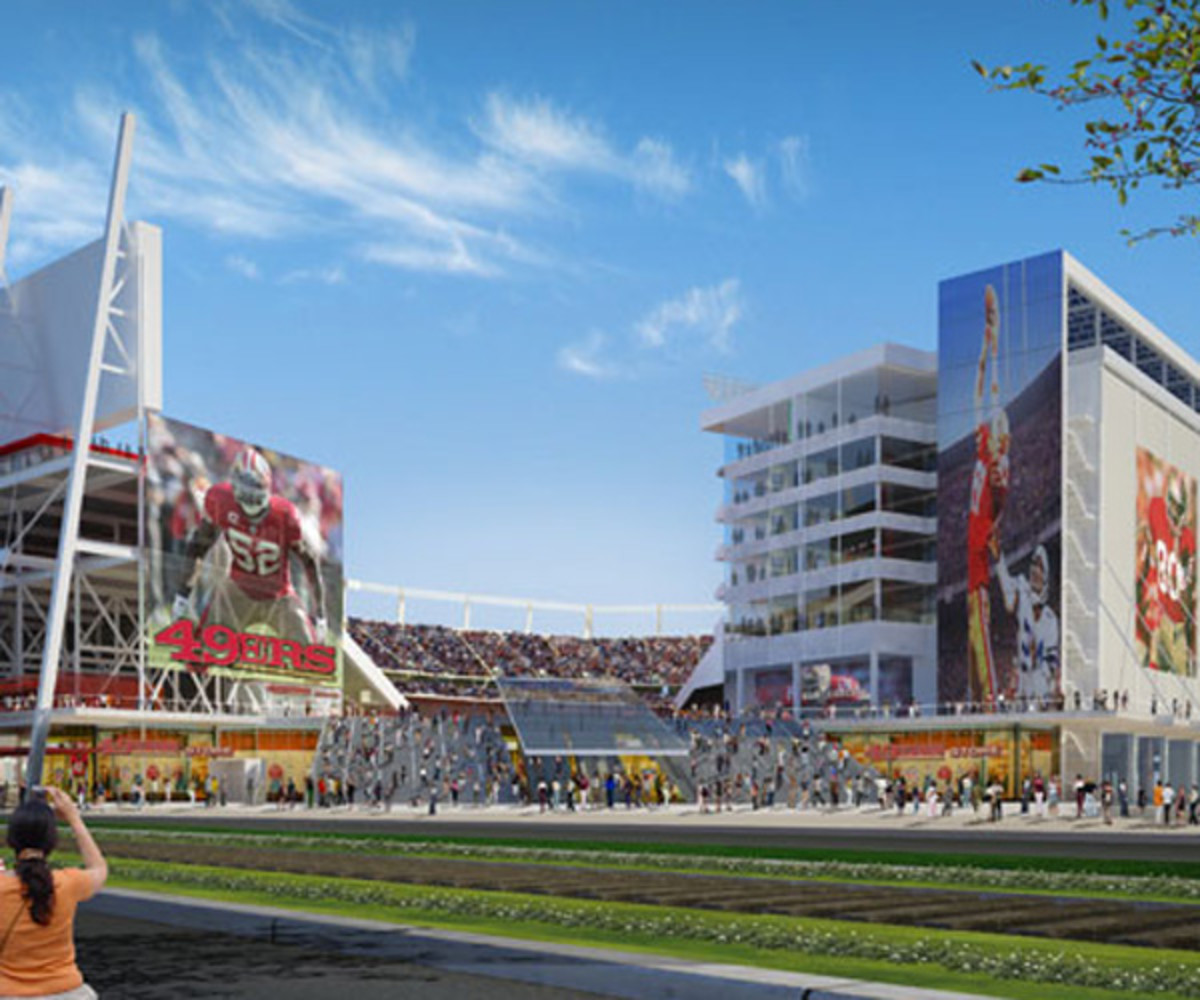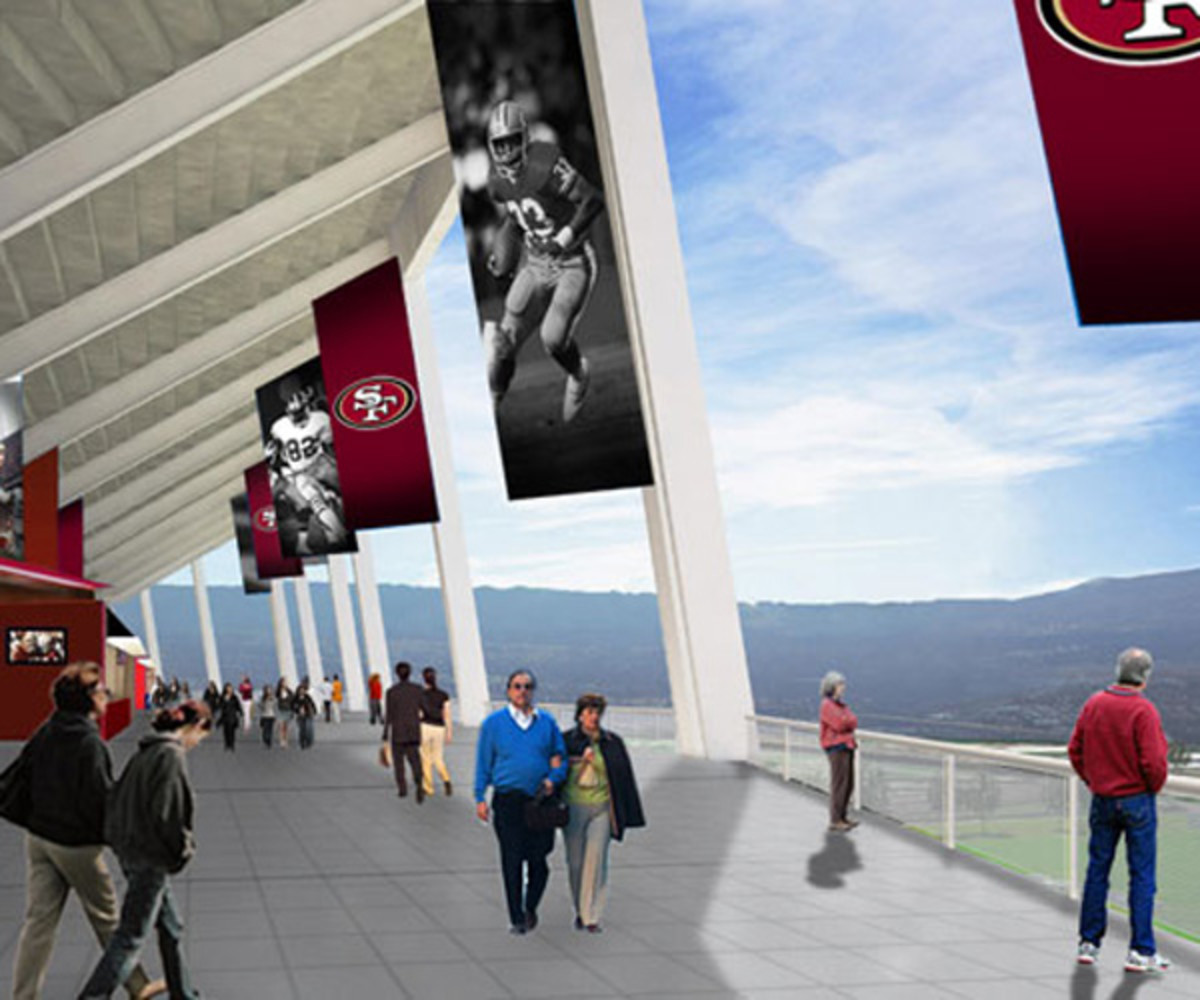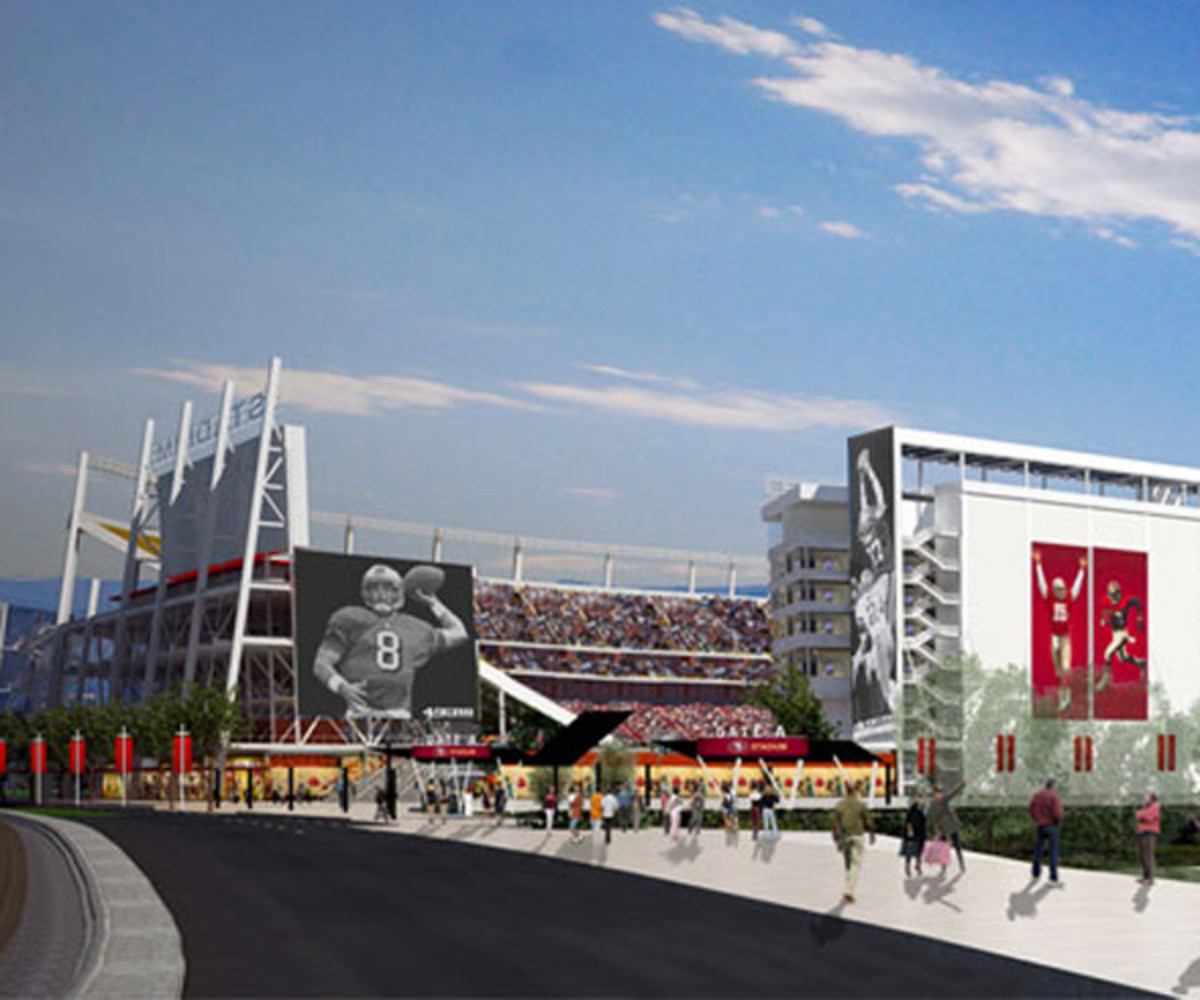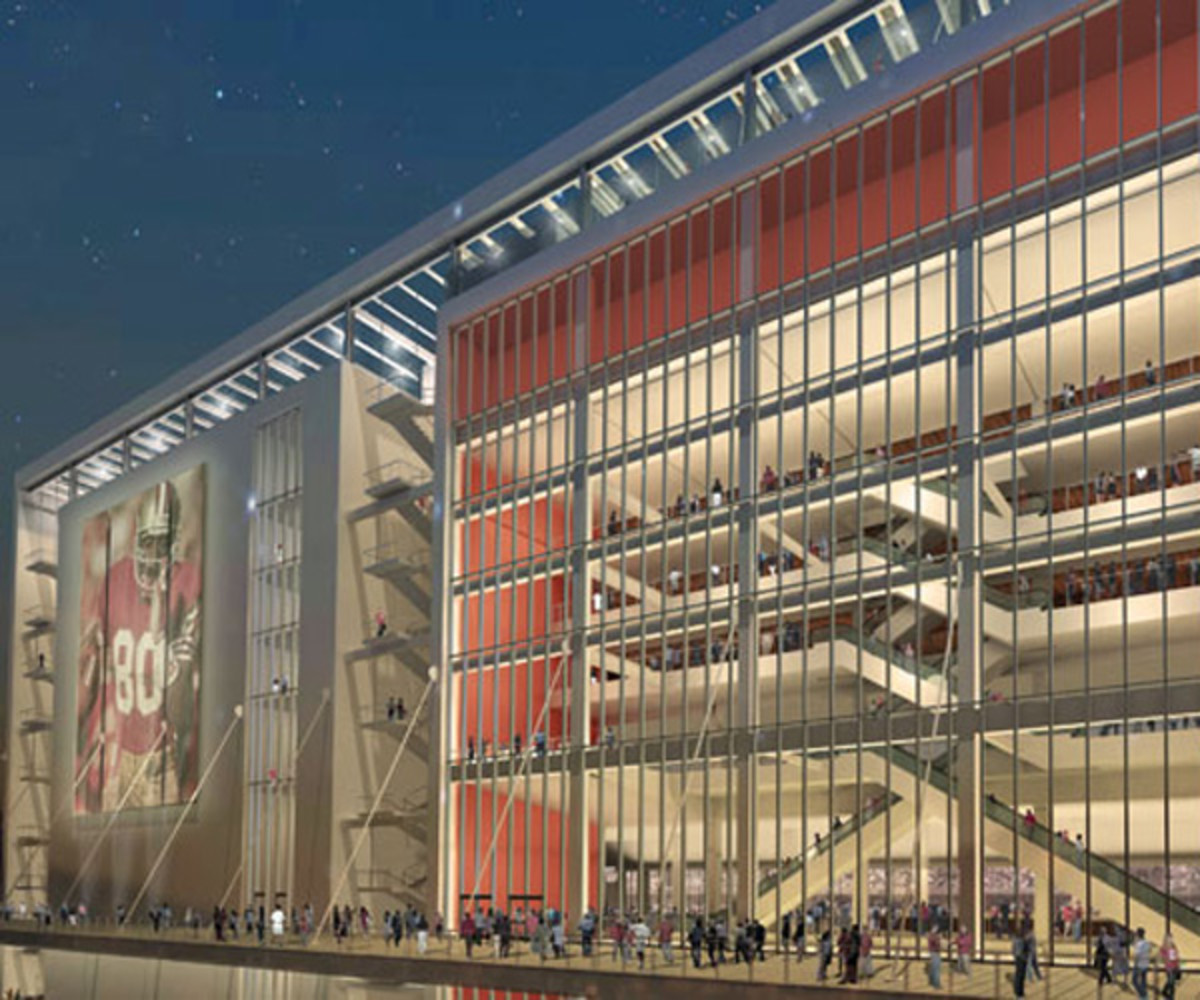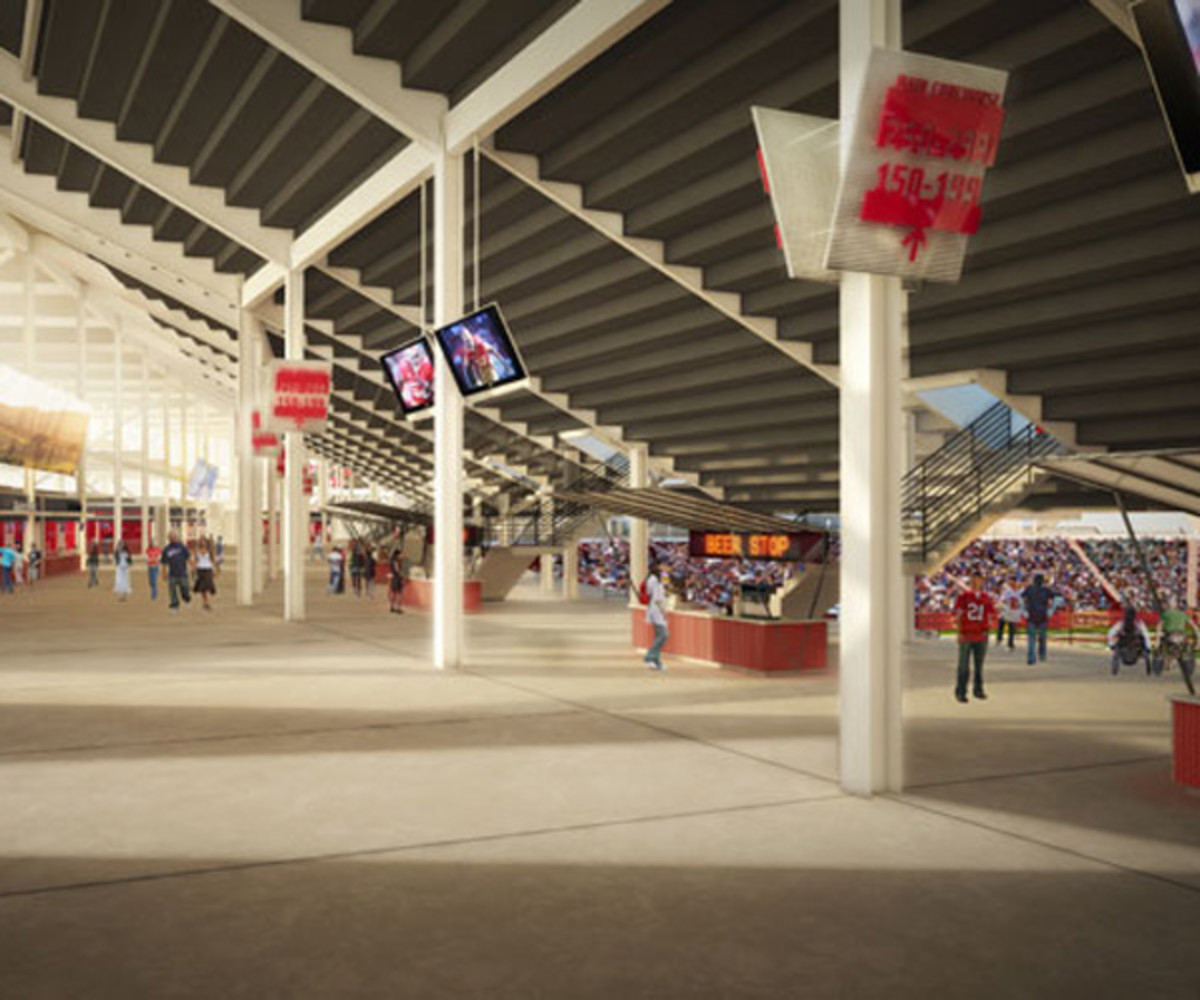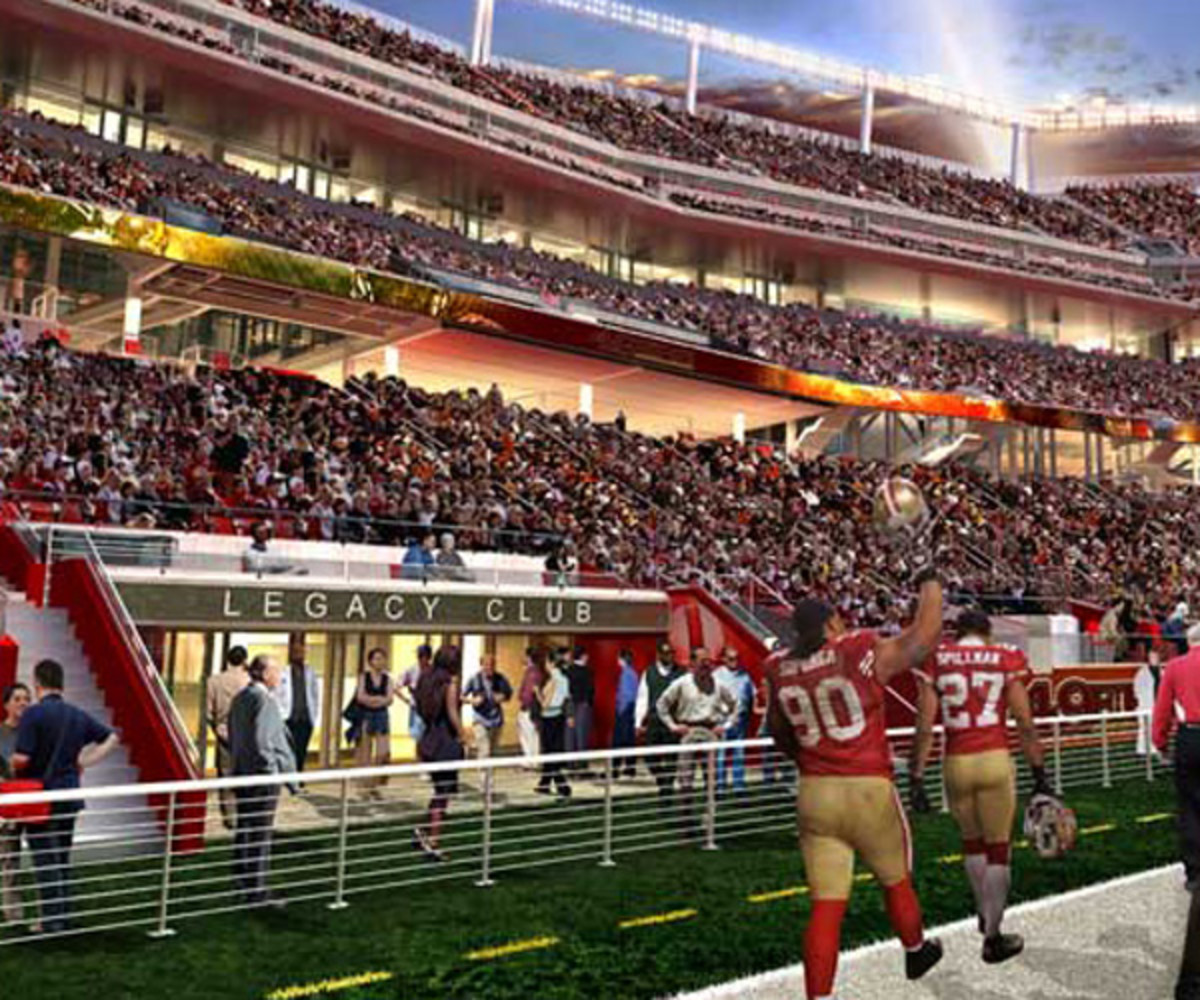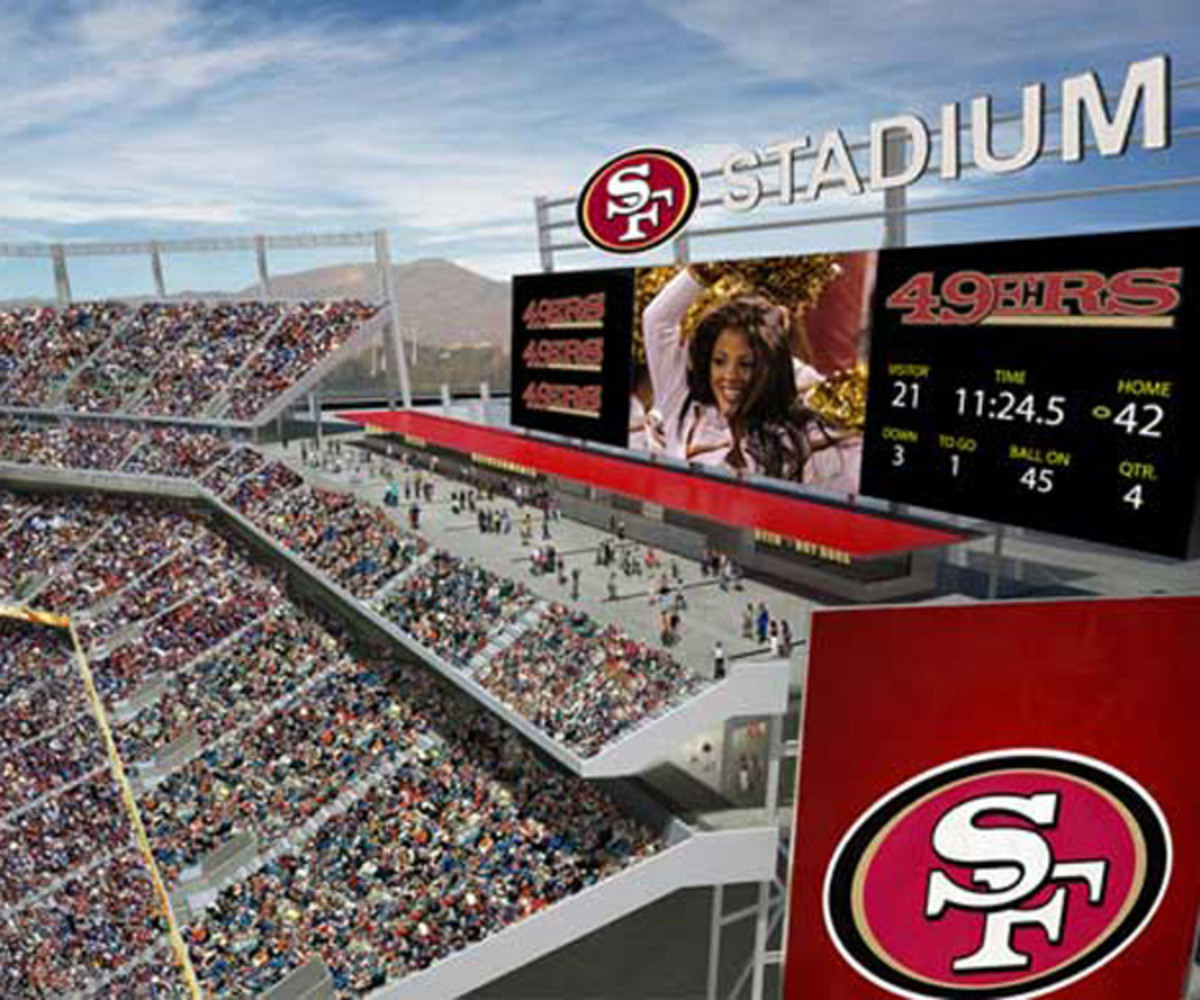The Niners Are Good At Everything: How San Fran Built A Super Bowl-Worthy Stadium


If the awarding of Super Bowl XLVIII to New York New Jersey and the Meadowlands left any doubt, today's news should adequately brush the rest of it away: endless sunshine (or an artificially pleasant stadium environment in a desirable tourist locale) is no longer a primary factor when it comes to landing a Super Bowl. (Though, it helps.) By announcing that the San Francisco 49ers will host Super Bowl L in 2016, the NFL made it clear to cities that building a new stadium will go a long way toward receiving the league's main event. And that's just what San Francisco and the 49ers were banking on.
Right from the start the designers of the forthcoming Levi's Stadium, which opens in 2014 and will be located in Santa Clara on the southern tip of San Francisco Bay, had a Super Bowl bid in mind. Lead architect Joe Diesko of Kansas City-based firm HNTB says they set out to create a venue that could easily expand from a standard capacity of 68,500 in order to absorb the larger Super Bowl crowds, while also leaving room for sideshow event spaces. Since 90% of stadium parking is to the west, both the northwest and southwest corners have giant, open plazas that will welcome arriving crowds on standard game days. When more space is needed—say, for the super L, or maybe a Wrestlemania—those plazas can accommodate thousands of extra raised seats to expand capacity. Add in the two giant party decks on the north and south ends, Diesko says, and there will be no shortage of places to stack more seating without drastically changing the feel of the stadium.
By taking into account Super Bowl needs—from seating to parking to event space—San Francisco all but guaranteed themselves an upcoming Bowl. (Meanwhile Miami, another finalist, didn't do itself any favors.) We've seen the NFL reward cities with the weeklong economic boon a Super Bowl brings whenever they pony up taxpayer dollars for a new venue: the game was in Cowboys Stadium (opened 2009) in 2011 and Indianapolis (opened 2008) in 2012, and next February will see the "cold-weather" game in New Jersey's stadium (opened 2010). At this rate, Minnesota has to feel good about its chances for the 2018 Super Bowl.

But Diesko and HNTB had more than just a one-off Super Bowl in mind when they drew up the plans. Rather, they're eyeing something more enduring: a fundamental shift in the way that technology plays a role in the fan experience. What the team hopes will really differentiate the park—and what could serve as a model for new stadiums in every sport— is the embedded tech:stadium-wide WiFi capability, mobile connectivity, IPTV, 13,000 square feet of video board and connection speeds that won’t disappoint Silicon Valley’s technology elite.
“We want to make sure nobody is inconvenienced by having to wait for a delayed signal,” says Diesko. They did this by designing the building to include all the space necessary for a robust technological infrastructure. “Part of it is making the fiber optic raceways, all the server rooms and the rooms that house the equipment large enough to accommodate anything we might have to do,” Diesko says. “We have to try to integrate technology in a reasonable way so it is not in your face, you're not tripping over it, and it doesn’t look like the dog’s breakfast." Since the project started in 2006 those spaces have only grown in size—in fact, they're the biggest moving part on the design. Suffice it to say, Super Bowl L shouldn't have any New Orleans-style power outages. (Nor any San Francisco-style ones.)
All that said, the weather in San Francisco wasn't completely discounted when the stadium was devised. For the rare fan that grows tired of their smartphone—or of watching the game, if they're actually doing that—the open-air layout and 63'-wide concourses expose visitors to the views outside the stadium, a bonus HNTB and 49ers folks think gives Levi's added appeal, regardless of the game being played inside.
“You can see all the mountains and the bay from the upper-deck concourse,” Diesko says. “The weather here is almost always nice, so we made the stadium all open. It's something you don’t get in Cleveland, Philadelphia or Chicago. Sure, Chicago has the lake, but it is still just colder than shit, so you don’t sit out there and contemplate the lake. That is a great advantage of the Bay Area.”
Well, that and Jim Harbaugh.
Tim Newcomb covers stadiums, design and technology for Sports Illustrated. Follow him on Twitter at @tdnewcomb.
The Niners Are Good At Everything: How San Fran Built A Super Bowl-Worthy Stadium
